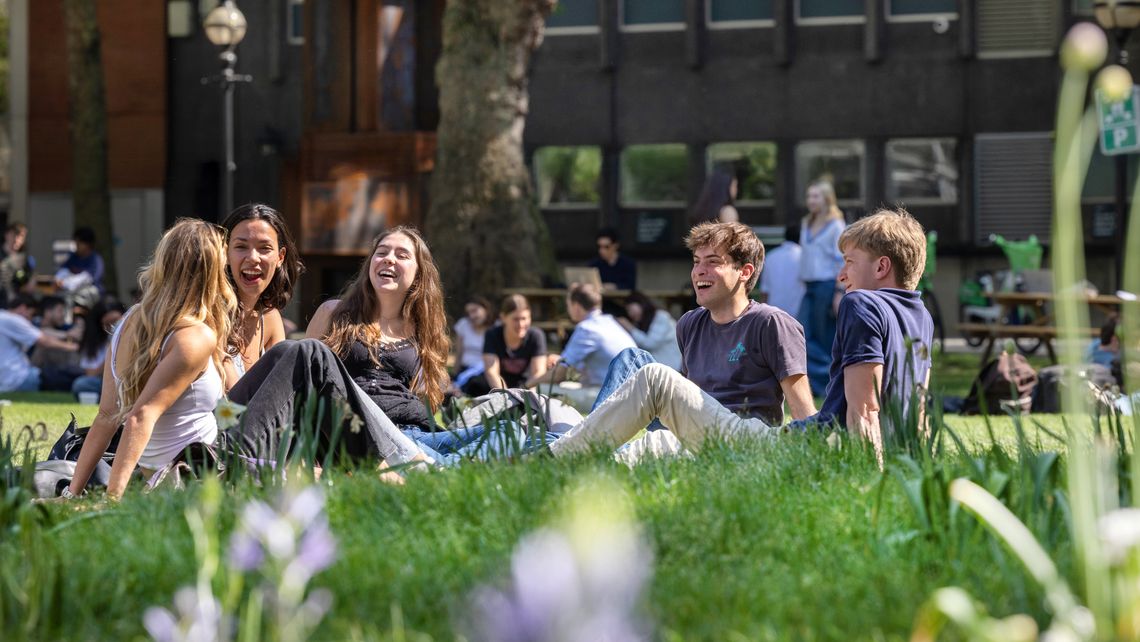Pushing boundaries is in Imperial’s DNA. Britain’s only higher education specialist in Stemb (science, technology, engineering, medicine and business) is a global leader in interdisciplinary research, driving innovation and entrepreneurship. The direct involvement of a high concentration of leading researchers in undergraduate teaching is another big draw, as well as a stellar record on graduate prospects. It takes the prize for University of the Year for Graduate Employment 2026.
Students need to think big: the road to a place at Imperial is littered with disappointed A* students as demand has soared in the past decade. In 2024, almost 33,000 applicants chased 3,255 places — and it doesn’t take an Imperial-standard maths whizz to work out that’s roughly 10-1 odds. Interest from overseas students has shot up, and applications from international students rose by nearly a quarter from 2020-24.
What is Imperial College London’s reputation?
Imperial was founded in 1907 by combining the Royal College of Science, the Royal School of Mines and the City & Guilds College into one institution. Since the inception of our league table in 1998, it has consistently ranked in the top five and counts 14 Nobel laureates among its alumni.
The university is first in our research quality rating, beating the University of Cambridge to the top spot, with 55 per cent of its work assessed as world-leading in the latest Research Excellence Framework (REF 2021). Its global influence is underlined by its second-place ranking in the QS World University Rankings 2026 — ahead of all other UK and European universities and behind only Massachusetts Institute of Technology.
The university was rated gold overall in the government’s Teaching Excellence Framework (TEF 2023), and the panel praised “research in relevant disciplines, innovation, scholarship, professional practice and employer engagement, contributing to an outstanding academic experience”. Imperial achieved silver for the student experience and gold for student outcomes. However in our analysis of the National Student Survey (NSS), Imperial has slipped, tumbling 28 places to 98th for teaching quality and three for the student experience (37=). The fightback has already begun: the Imperial Experience, a multi-year project, is a consultation project inviting students to weigh in on what makes life on campus unique and rewarding. The university has also increased the number of study spaces in the Abdus Salam Library on the original South Kensington campus, which is open 24 hours except on Friday nights.
What degree courses have been discontinued and what new courses are available?
Imperial’s first graduate-entry medicine students began their courses in September 2025. From 2026, the university will offer integrated master’s programmes in biochemistry, biological sciences, and biotechnology.
It is suspending its integrated master’s degree in chemical engineering with nuclear engineering and withdrawing materials with management from 2025.
What are Imperial College London’s entry requirements — and my chances of getting in?
Imperial's minimum A-level entry requirements are AAA, with standard offers between A*A*A and AAA. In reality, many competitive courses demand higher grades. Imperial does not use Ucas tariff points and does not recruit through clearing. There is a reconsideration pool in August.
What are the graduate prospects?
A five-time winner of our University of the Year for Graduate Employment award, Imperial tops our table for graduate prospects, with 95.9 per cent of graduates moving on to highly skilled jobs or further study within 15 months. More than 17,000 students book on to Imperial’s industry-facing activities and careers fairs each year and regular guest lectures, scholarships and prizes help to keep the talent pipeline moving along.
The TEF 2023 panel commended Imperial’s "outstanding rates of successful progression" and noted that "students have some of the highest average starting salaries in the sector”.
What is the Imperial College London campus like?
The main South Kensington campus hosts centres of expertise including the Dyson School of Design Engineering. Imperial’s newest addition is the 23-acre White City campus, which hosts the School of Public Health. Scale Space, on the same site, brings together researchers and business networks, while the Invention Rooms offer space for staff, students and industry partners to collaborate, The Faculty of Medicine is one of Europe’s largest in terms of staff and student numbers and Imperial has teaching bases at four central and west London hospitals: Charing Cross, Hammersmith, St Mary’s and Chelsea and Westminster. Silwood Park is Imperial’s rural campus, with nearly 200 acres in Sunninghill, Berkshire, where ecologists are involved in leading projects to track the effects of climate change on trees, birds and pond ecosystems.
When can I visit?
Everything you need to know about Imperial College London’s student life and wellbeing support
Imperial students find themselves in the beating heart of London, which was rated the world’s best student city by QS for six years in a row until being dethroned by Seoul in the 2026 rankings. There are more than 340 student-run clubs and societies. The Blyth Centre for Music and Visual Arts provides music practice rooms, art classes, and an open-access art studio. Imperial’s Ash Music Scholarships come with free lessons (instrument or voice) at the Royal College of Music.
A £70 annual fee gives students gym and swim membership to the Ethos sports centre in South Kensington, which has spa facilities and a climbing wall. The fee also provides access to Move Imperial gyms on campus and outdoor facilities are at Harlington Sports Ground, near Heathrow airport.
Health and wellbeing services on campus include confidential counselling and a multifaith centre for worship. Advisers and tutors at the university’s disability advice service offer help for living with conditions including autism and ADHD.
What do the students say?
“I wanted to be part of a university focused on the future and that encourages collaboration across different fields. Imperial is a place where you're pushed to grow, both academically and personally, and being part of such a vibrant, international community has broadened my perspective.”
Alexia, MSci mathematics
What about student accommodation in Imperial College London?
All first-years who apply by the deadline are guaranteed a space in halls, with prices ranging from £145 to £390 per week. After the first year, students must navigate London's competitive rental market.
How diverse and inclusive is the Imperial College London?
The university has the lowest state school intake in England and Wales at 42.3 per cent. Overall it ranks 105th in our social inclusion index, a seven-place improvement. It holds top 20 rankings for ethnic diversity (65.3 per cent, 17=) and the dropout rate for students from low-participation areas (-0.3 per cent, 20th).
Everything you need to know about scholarships and bursaries at Imperial College London
Four in ten new UK students receive some form of financial support, which includes the Imperial Bursary, worth between £1,000 and £5,000 a year for undergraduates with annual household incomes up to £70,000. This is a much higher income threshold for bursaries than at other universities.
In 2025-26, Imperial also offered more than 100 undergraduate scholarships starting at £1,000 up to £14,000 a year, covering full tuition and support for living costs.
Win a uni bundle with John Lewis
Times+ members have the chance to win one of five uni bundles including bedroom, kitchen and tech essentials courtesy of John Lewis. Enter here . T&Cs apply.






